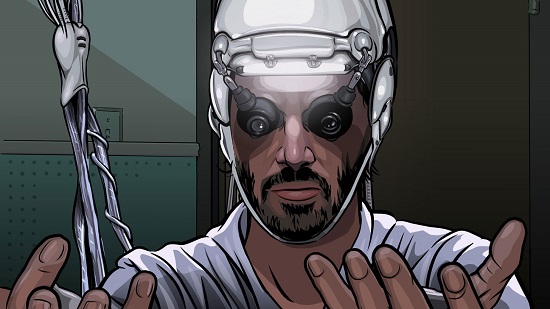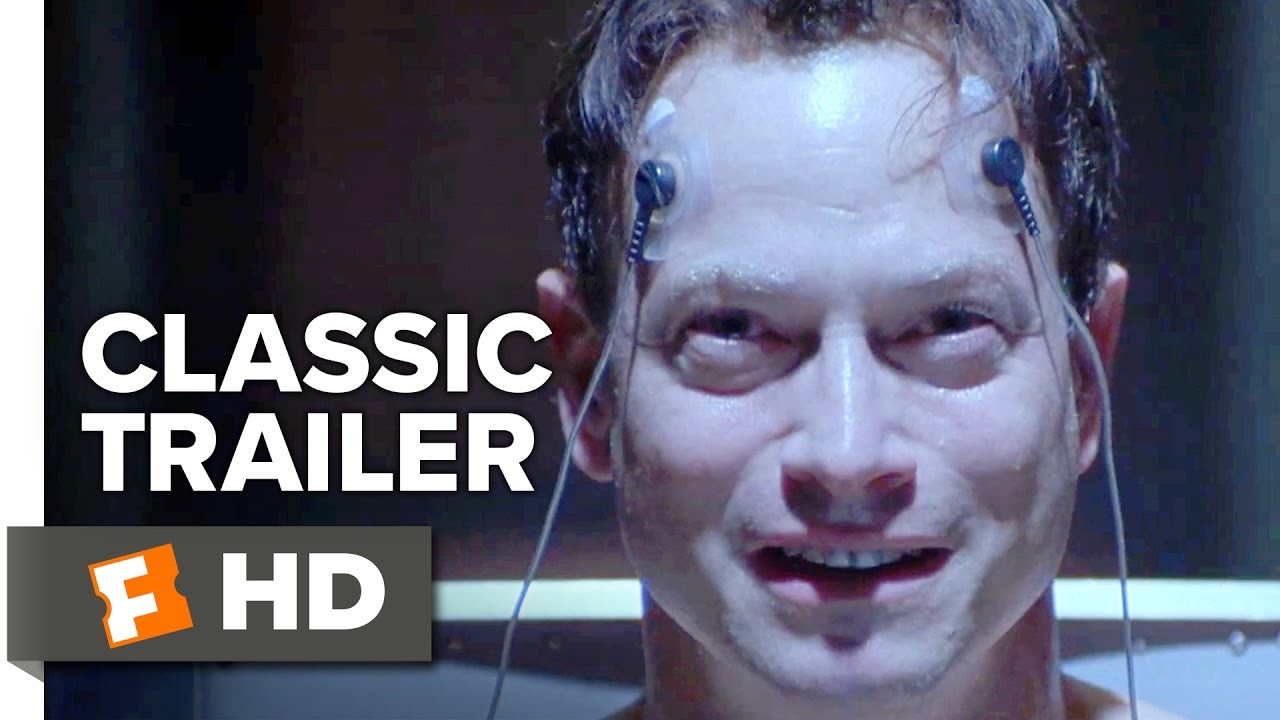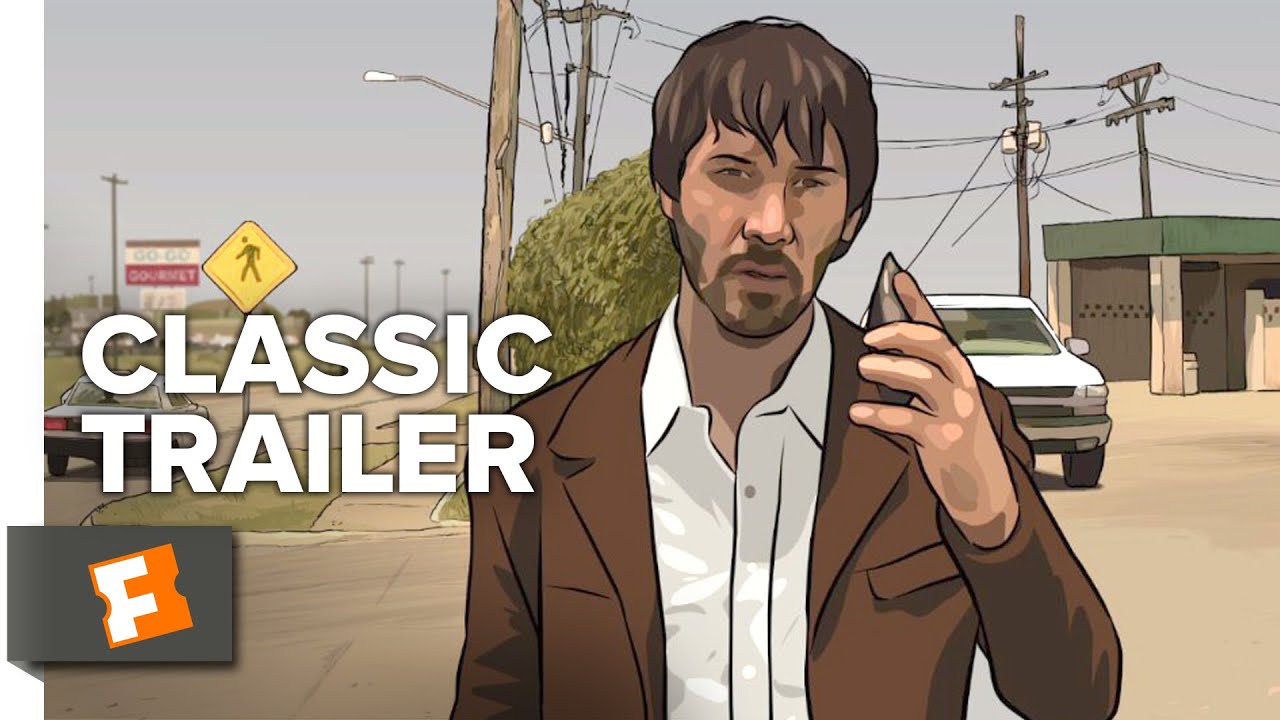Since the early 1980s, Philip K Dick’s work has proved incredibly popular as a source for film adaptations. His explorations of the many futuristic worlds humanity could populate, together with the way he utilises these to provide detailed examinations of his main characters and their identities have made his works extremely popular. Short stories or novels, the clever way he twists his narratives suits film perfectly. As a result, starting with Blade Runner in 1982, the only film that he ever interacted with before his death, there have been more than a dozen different interpretations of his work made for the big screen. Next week’s release of Blade Runner 2049, a sequel to the ’82 film, marks yet another to take his work as inspiration, so it seems pertinent to explore how a few of these adaptations take Dick’s ideas and attempt to mould them for cinema, for better or for worse.
Do Androids Dream Of Electric Sheep? was Dick’s typically idiosyncratic title for the novel that would become 1982’s Blade Runner. It’s a novel with philosophy at its heart like many of his works, interested in poking and probing the boundaries of what constitutes humanity and doing so with his usual panache, using those blurred philosophical lines to create dramatic tension. These studies of the very edges of sentience, particularly important when you factor in his penchant for artificial intelligences, often serve to place a question in the reader’s mind about what these themes represent and whether to agree or disagree with the main character’s conclusions by the end.
Ridley Scott’s Blade Runner takes these themes and runs with them. It is tasked with providing Dick’s words with a visual space that honours him but also makes sense in the cinematic medium. Scott manages to do that, creating a highly influential aesthetic drenched in neon that also captured the murkiness of Dick’s dystopian world. The artificial light that forms most of the film’s landscape barely covers an underlying griminess that personifies the nature of the world, and the film focuses on that atmosphere, allowing it to ground the story and main character Rick Deckard’s actions.
It also captures the complexities of the novel’s story, even if it removes and changes characters for the new medium. Gone is the disillusioned, distant couple that form the framework of the novel, and in comes Sean Young’s now iconic Rachael, a reworking of a character in the novel who is used as the foil to bring out these philosophical themes. Thus showcasing Dick’s ideas about the boundaries of humanity in a relatable way for the audience.
Since Dick’s works are as much about the landscapes he creates as they are about the characters that inhabit them, this amalgamation of both visual innovation and narrative complexity is what’s needed to create an adaptation that honours his writing, so much so that the man himself was satisfied with what he saw of the film before his death. Leaving aside the 47 or so cuts that now exist of what is now considered a classic of sci-fi filmmaking as a whole, Blade Runner can be considered a benchmark for how adaptations of Dick’s work should be approached.
1990’s Total Recall adopted a similar approach to much success, utilising the main idea of Dick’s short story We Can Remember It For You Wholesale (he could definitely write a pithy title) to craft something that both gets across the philosophical problem discussed and captures the aesthetic of the world, which once again feels oppressive and makes itself known in every scene. However, not every adaptation worked so well, as 1995’s Screamers proved.
It is developed from Second Variety, a remarkable short story that once again deals with how we understand humanity and whether robots can undermine that understanding, blurring the line between us and them. However, the story is also about war and its never-ending futility as the UN and the Soviet Union, opponents in a drawn-out conflict that’s reduced the Earth to a barren wasteland, unleash a veritable cornucopia of nasty robots on each other that both sides soon lose control of entirely. This leaves them to evolve and mature of their own accord, though they do still understand some semblance of which side they’re on. It is a bleak picture of the future of humanity, written during the Cold War in 1953, and a mark of where Dick thought humanity could go if it wasn’t careful. Escalating tensions between East and West at the time seemed like they would come to a head, and he explores a potential outcome thoroughly and with his usual ability to make the reader think while achieving a more visceral, shocking reaction at the same time.
The funny thing about Screamers is that it removes all that sense of import from the very beginning by changing the story so that it’s a conflict between two generic sci-fi sounding organisation acronyms on a distant planet fighting over a resource. From the beginning, this makes it tougher to care about the characters or the outcome, since it’s no longer about the fate of Earth itself, or the adverse effect humanity had on its survival.
The film also struggles to trust enough in its source material to allow it to resonate as it does on the page. It prefers, rather, to layer in clichés in an attempt to endear itself to a cinemagoing audience. There’s an incredibly hammy romance that smacks of desperation, as if the director Christian Duguay thought no one could possibly be interested unless he stuck cardboard cut-out characters in and siphoned away the originality. Unlike the budding romance in Blade Runner, it does not embody the ideas Dick tries to get across, instead taking away from them and drawing the focus on a few smooches. The soundtrack swells in the background in these moments, begging you to react with some emotion, when all it really inspires is disdain. Ultimately, it results in the ending being compromised and nowhere near as impactful as it could have been.
This is a shame because Screamers is another film that manages to capture the correct aesthetic. The futuristic elements are generally well designed and they have a heft to them that mirrors the importance the setting has in the original story, always acting as something that exacerbates the tension, making it clear that there is no way out for the characters. Sadly, in this case the atmosphere was not filled with any meaningful substance. Screamers somehow got a sequel in 2009 (it did not get the hype that Blade Runner 2049 is getting) and there is even less to recommend that, as it continues to revel in cheap cliché with even worse results.
Imposter, made in 2002 by Gary Fleder, and based on another very innovative short story by Dick, is an interesting example because it wastes its source material entirely in favour of using it to attempt to endlessly ‘thrill’ (it really doesn’t) the audience with chase scenes. Sequence after sequence of weirdly edited chases numb the brain cells rather than engage them. After all, why use one camera when you can use five and splice it all together in an insufferable montage?
In the short story, Dick, who was clearly fascinated with the potential of futuristic AI, once again examines the blurred lines between what makes a human and what makes them a mere android, doing so in an unsettling and thought-provoking manner. In the film, the closest it gets to being convincingly unsettling is unintentionally through the cast’s incredibly stodgy performances. Many of the cast, which features the likes of Gary Sinise (here as charismatic as a plank of wood) and Vincent D’Onofrio (in full over-acting mode), have rarely been poorer in their careers, a feat Fleder clearly worked hard to achieve. Perhaps, in a remarkable twist, everyone working on the film was an android when they made it, though much less convincing than the ones that Dick invented.
In terms of aesthetic, the film bathes many of its scenes in neon light to attempt to recreate the ‘cyberpunk’ feel of Blade Runner, but it feels cheaper and less believable, not managing anything but to cause the film to be ‘poorly lit’, as New York Times’ critic A.O Scott said at the time. It tries far too hard to be ‘epic’ when all it needs to be is convincing enough for the story to shine through, something it doesn’t manage at all. It’s definitely another one where the source text is well worth checking out, while the film is well worth staying away from.
Those successful iterations of Dick’s work, like 2006’s A Scanner Darkly, remember that at the heart of the stories is a complexity that needs to shine through, preferably amidst visuals that add weight to that sense of complexity. That particular novel was one of Dick’s most autobiographical, a sort of semi-insight into the state of his brain at certain moments during his life, which made it easier for him to envision a world where drugs have consumed large portions of society.
Richard Linklater is an extremely talented director, and he immediately sought out to create a fever dream-like experience that would most accurately portray the paranoia and drug-addled instability of the world, utilising his unique animation style to emphasise and exacerbate that ridiculousness. As a result, the film has the visual elements it needs to bring Dick’s words to life, the paranoia permeating and mixing together with the absurdist comedy, all while it provides a nuanced and subtle commentary on the war on drugs.
Dick has always focused intently on ideas that allow him to explore philosophical concepts, once again exploring themes like identity and the nature of oppression, particularly by overbearing governments. Linklater allows all this to come through with no great fanfare, suggesting it rather than ladling it as thickly as possible. Obviously, A Scanner Darkly is quite a long-winded film that revels in its dialogue, and many have found it difficult to connect with as a result, but Linklater’s approach definitely allows Dick’s most interesting ideas to rise to the forefront, all bolstered by strong performances from a stellar cast featuring the likes of Robert Downey Jr and Woody Harrelson.
Denis Villeneuve, who helmed Blade Runner 2049, also revels in nuance and is interested in exploring philosophical ideas rather than chucking them aside in favour of clichés. The main difference for Villeneuve that separates his endeavour from the likes of Linklater’s work and even from Ridley Scott’s initial work on Blade Runner is that this film is a sequel. This means that while general themes and aesthetic styles remain, Blade Runner 2049 must find a new angle from which to approach these ideas, a new way of examining the boundaries between human and robot. This was a speciality of Dick’s, so it will be interesting to see if the film can channel his example, and perhaps frame the dichotomy in a slightly different way, assessing the human-replicant divide through new eyes, with Ryan Gosling as the main character rather than Harrison Ford. Ingenuity is key, and the atmosphere of the original film must once again be captured to allow the right framework for the complexity of the philosophical ideas to flourish, the aesthetics playing a large part in the world-building of the franchise.
There was much consternation when this sequel was announced, and a lot of bafflement that there would be a return to a story that seemed to have ended in the perfect way. But there is room for optimism, room perhaps to hope that Villeneuve can create something that continues to pose questions in a thoughtful and engaging way about the nature of humanity while also maintaining the atmosphere of the original. From the trailers it’s clear to see there’s a lot of neon light at least, and that’s probably a good start.
Blade Runner 2049 is released in the UK on October 5th





